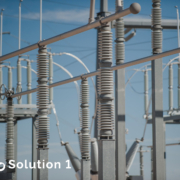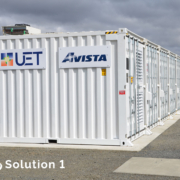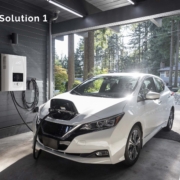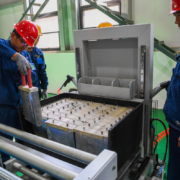Modern smart battery energy storage systems can support grid frequency regulation.
- This operation of the smart battery energy storage systems can provide economic benefits as it mitigates the need to use high-priced peak electricity generation.
Smart battery energy storage systems would lead to economic benefits to both homes and companies by enabling cost savings achieved through storage of power purchased off-peak, and more efficient use of the energy grid by providing constant energy reserves and storage for meeting changes in supply and demand.
“The benefits far outweigh the disadvantages of repurposing vehicle batteries in smart battery energy storage systems. According to Battery Global Alliance estimates that in 2030, 61% of car batteries could be repurposed after the end of their automotive use, substituting 20 GWh of new energy storage systems, an amount corresponding to 6% of that year’s demand for energy storage systems.”
Repurposing a battery pack in battery energy storage systems seems to be most useful for stationary energy storage applications, such as grid support or storage system of renewable energy and integration in the grid. Battery energy storage systems allow for storing energy at periods of low demand at night and release it during the grid peaks, which usually take place in the noon or early evening. Battery energy storage systems enable individual decisions to charge and discharge at specific times depending on the different electricity tariffs, with corresponding economic gains.
In particular, modern smart battery energy storage systems can also support grid frequency regulation. The use of new batteries for load shifting has been studied in a lot of research papers, but the high cost of new Li-ion battery packs makes this option not so smart. so that, repurposed packs will be available at a low cost, making the potential battery energy storage systems option much more economical.
Battery energy storage systems can be also used as backup power systems in residential or commercial buildings, particularly in contexts of instability and limited reliability of the generation or distribution networks, substituting polluting fuel generators. Initially, users need to be encouraged to re-use battery energy storage systems, but it is no doubt a positive policy measure because of the potential environmental benefits.
- Peak load shaving is a more desirable method to face the challenges of peak load demand.
A decrease in energy transfer fees and getting higher revenue for feeding into the electrical grid would further encourage homeowners to use smart battery energy storage systems. Industrial use of battery energy storage systems has an added incentive for storing power purchased off-peak because they can directly benefit economically. Good use of battery energy storage systems is also supporting decentralized energy solutions, in contexts of low use or no use to the local grid.
Since renewable energies are by nature intermittent, being able to store energy is critical to support their expansion and ultimately decrease the carbon footprint of the energy sector.
By alleviating the issue of the intermittent nature, it supports the expansion of these energy sources and provides answers to challenges affecting the electric grid such as generation intermittency and asynchrony of generation and demand peaks. Smart battery energy storage systems allow leveling peaks in renewable energy generation, a peak that takes place around noon for solar and generally during the night for wind power generation.
“According to the International Energy Agency has identified a Sustainable Development Scenario where renewables reach a share of two-thirds of electricity generation output and 37% of final energy consumption by 2040, so one might say it is a clever move to further develop this energy storage technology.”
Properly configured battery packs as a part of battery energy storage systems can decrease the monthly energy costs of an industry or a home by simply shifting electricity purchases to off-peak times and can favor renewable energy sources. The benefits include cost savings, more effective use of the transmission grid, emission reductions, and integration of renewable power.
In regard to the effective use of the original materials and manufacturing, repurposed batteries add a separate life cycle to the manufactured battery. Extending the effective useful lifespan of a battery pack by a decade when repurposed for the energy storage system.











